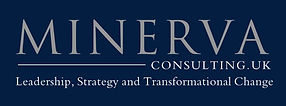
Organization Review
OReview
To understand the ‘as is’ current situation, and to enable achievement of the ‘to be’ desired future state, we undertake organizational reviews. We use a pragmatic and shortened form of academic research methods, to analyse and understand an organization, its purpose, aim and objectives, culture, people and performance against key success criteria. This is allied to in-depth analysis of the ways to exploit strengths and options to improve any areas of weakness.
Analysis and options are always developed with the cognisance of how any improvements or changes will be implemented and embedded, while also allowing leaders and their teams to continue delivering operational outputs.
“We know how to identify the priority tasks for action and we know how to realise those priorities”. Our lack of bureaucratic process and organizational drag enables us to deliver high quality results at unexpected pace.
Reviews may include:
-
Plausible and realistic strategy, with lines of activity integrated and underpinned by a unifying and meaningful purpose.
-
An agile approach to structure and definition of role relationships which enables strategy execution and evolution, and creates ways of working that will endure, be resilient to inevitable environmental, financial and political challenges, and deliver outputs efficiently with clarity of purpose at all levels.
-
Leaders and Leadership — diagnosing strengths, risk and reality with options for organizational, team and personal leadership capability development.
-
Organizational culture; the reality of culture being driven by the way the organization is structured and operates, as much as by leaders and people. We identify how to implement beneficial change to the organization using the ‘four channels of communication’ that exist in organizations, to shape the desired culture and improve productivity.
-
Bottom up driven insight into how an organization really works linked to top down vision and direction, and supported by lateral best-practice.
-
Multi-function delivery; how best can an organization enable the cross-boundary collaboration required in a VUCA world to deliver the required outputs both efficiently and effectively?

The 3 Components of Organizational Capability
Physical: People you can employ or contract, facilities, services and equipment you can rent, hire or buy.
Moral: The legal and ethical foundation of your enterprise and its purpose, and the leadership which inspires and engages people and aligns their activity.
Conceptual: The thinking, concepts, policies and practices which underpin your organization and its activity; including the approach to leadership, strategy execution and change, and organization design.